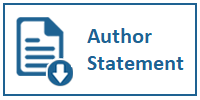Partisan Selective Exposure in COVID-19 News
DOI:
https://doi.org/10.31937/ultimacomm.v13i1.1999Abstract
Partisan selective exposure to online COVID-19 news articles is hypothesized to increase one's exposure time to politically opinion-reinforcing news when exposed to a more opinion-reinforcing news environment and to increase one's exposure time to politically opinion-challenging news when exposed to a more opinion-challenging news environment. This blocked 2x3 within-subjects experimental study crossed partisan stance (Pro Jokowi vs. Pro Anies) as the blocking factor with news conditions as the experimental factors (Pro vs. Contra vs. Control). The study randomly assigned 216 participants living in the Jakarta metropolitan area during the COVID-19 pandemic to two experimental and one control group for each stance (Pro Stance, Contra Stance, Control). Data shows how participants significantly spent more time on politically opinion-reinforcing news when in the Pro Stance condition, compared to when in the Contra Stance condition, and compared to when in the Control condition. Participants only significantly spent more time on politically opinion-challenging news when in the Contra Stance condition as compared to when in the Pro Stance condition, but not significantly as when compared to in the Control condition. The study took a look at how partisan selective exposure may play out in a certain news environment and found how a polarized news environment would lead to a more polarized exposure, which could get disastrous as it may play a role in people's behavior towards the COVID-19 pandemic. Hence, getting ourselves accustomed to perspectives from an equal news environment could lead us to be less polarized, and therefore be wiser at determining our standpoints towards the COVID-19 pandemic.
Downloads
Downloads
Published
How to Cite
Issue
Section
License
Ultimacomm Jurnal Ilmu Komunikasi allows readers to read, download, copy, distribute, print, search, or link to its articles' full texts and allows readers to use them for any other lawful purpose. The journal allows the author(s) to hold the copyright without restrictions. Finally, the journal allows the author(s) to retain publishing rights without restrictions
1. Authors are allowed to archive their submitted article in an open access repository
2. Authors are allowed to archive the final published article in an open access repository with an acknowledgment of its initial publication in this journal















